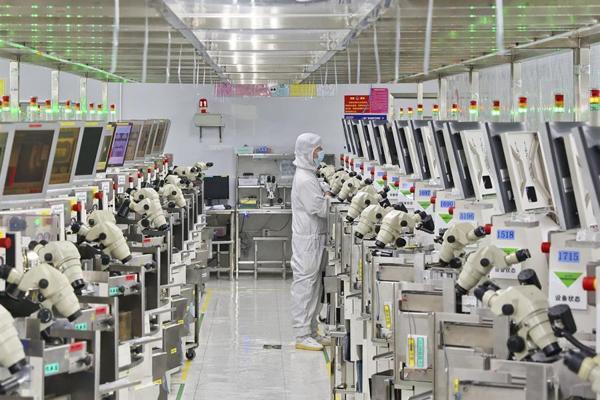China manufacturing weak, adding to economy pressure
BEIJING


Growth in Chinese factory activity was weak in September, export orders fell and employers cut jobs, two surveys showed Friday, adding to pressure on lackluster economic growth.
A monthly purchasing managers’ index released by business news magazine Caixin fell to 48.1 from August’s 49.5 on a 100-point scale on which readings below 50 indicate activity contracting.
A separate PMI by an official industry group rose to 50.1 from 49.4.
“The surveys suggest that China’s economy continued to lose momentum,’’ said Zichun Huang of Capital Economics in a report.
That adds to complications for Chinese leaders who are trying to reverse an economic slump after growth fell to 2.2% in the first six months of 2022, less than half the 5.5% official target.
Those efforts have been hampered by weak global and Chinese consumer demand and a slump in real estate activity caused by an official crackdown on the industry’s use of debt.
Caixin’s index of new export orders fell to a four-month low and the China Federation of Logistics & Purchasing said its separate index declined to 47 from 48.1. Both said measures of employment were in negative territory, showing companies cut jobs.
“We think the economy will remain weak heading into 2023,” said Huang.
Meanwhile, China released more pork reserves on Sept. 30, state media said, after prices of the staple meat soared by almost a third, triggering inflation concerns.
Beijing’s top economic planner has already dipped into the state reserves three times this month and has ordered suppliers to slaughter more pigs in a bid to rein in costs.
But prices have continued to rise and a possible spike in demand over the week-long national day holiday in early October, has forced officials to respond.
“China will release more pork from government reserves to the market on Friday to maintain supply and price stability,” official People’s Daily reported.
Pork is the most commonly consumed meat in China, with the average person in the country eating more than 25 kilograms per year, according to OECD data.
Pork prices in the country have continued to rise since mid-March, despite government intervention, hitting 31.17 yuan ($4.40) a kilo last week.
China’s consumer inflation reached a two-year high of 2.7 percent in July - largely because of surging pork costs - before cooling slightly to 2.5 percent in August as COVID-related restrictions dampened overall demand, official data showed.
The Chinese government keeps massive stores of frozen pork in warehouses, occasionally releasing reserves to stabilise prices, especially during periods of peak demand including Lunar New Year.
